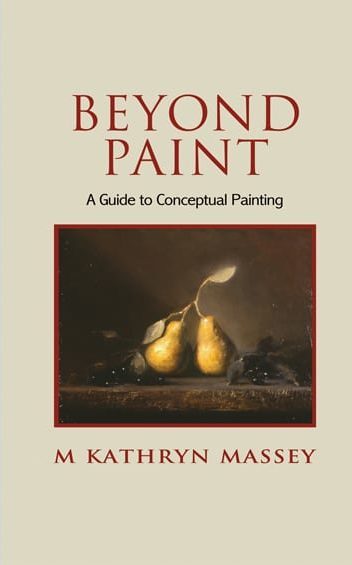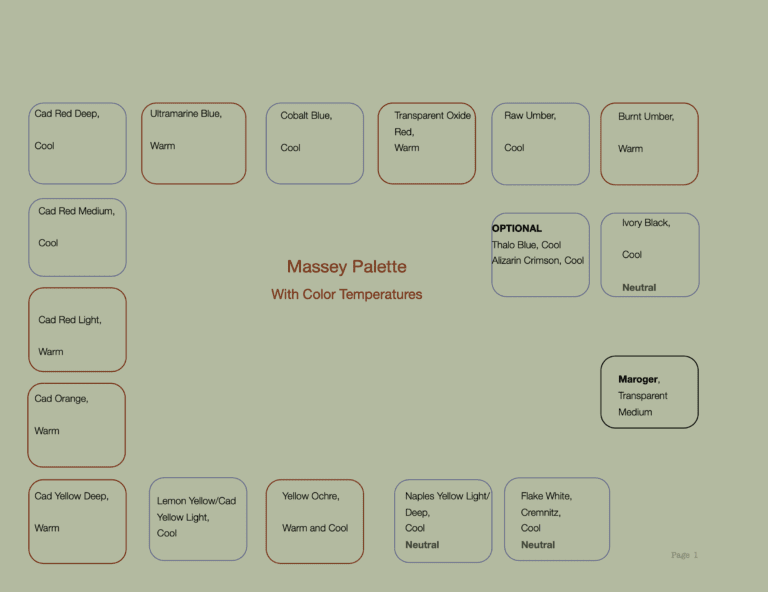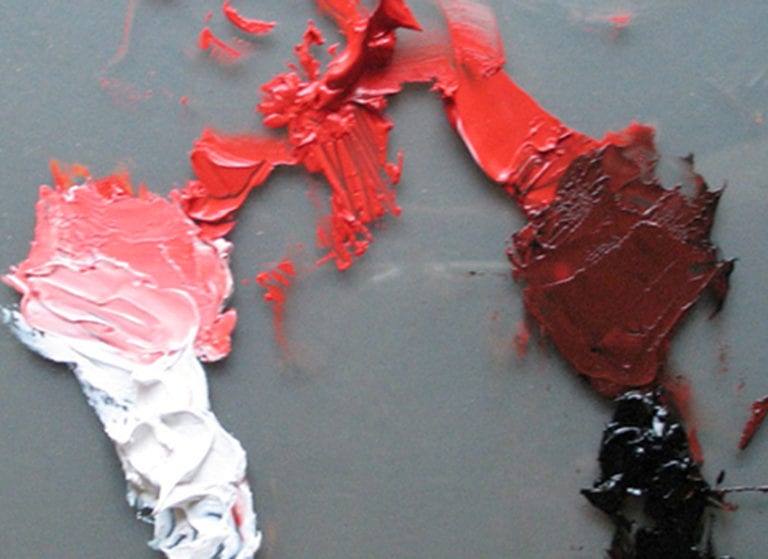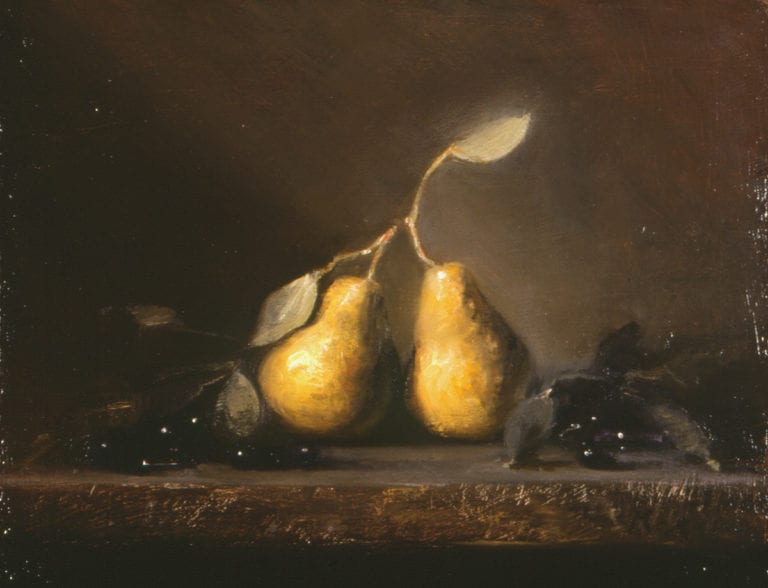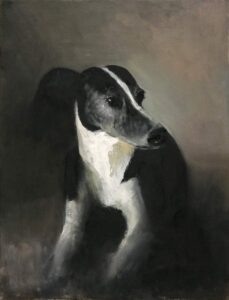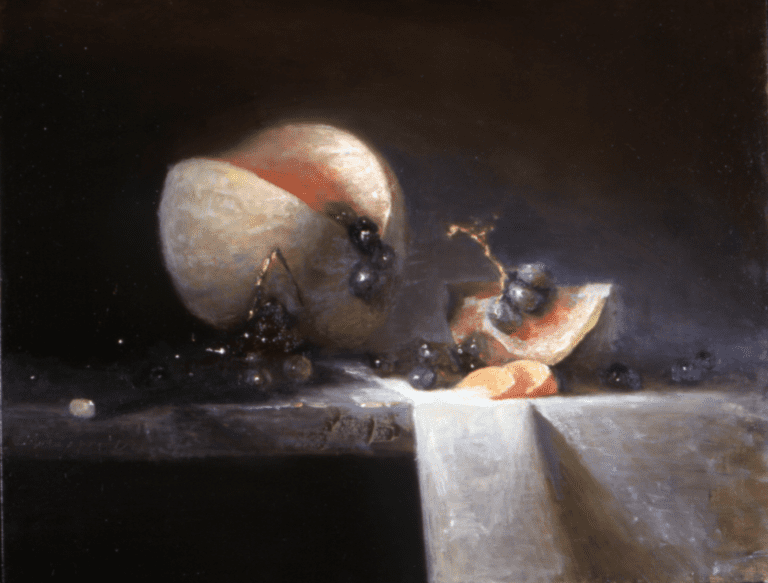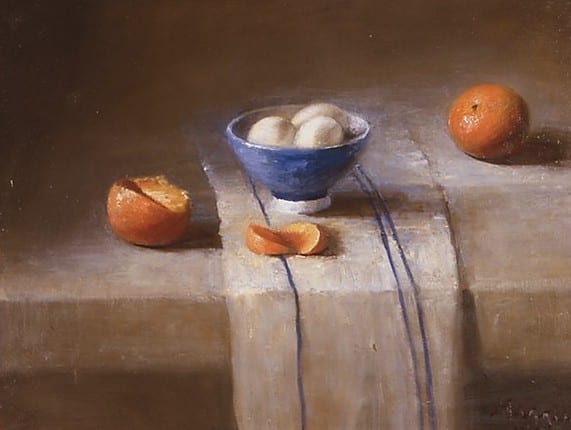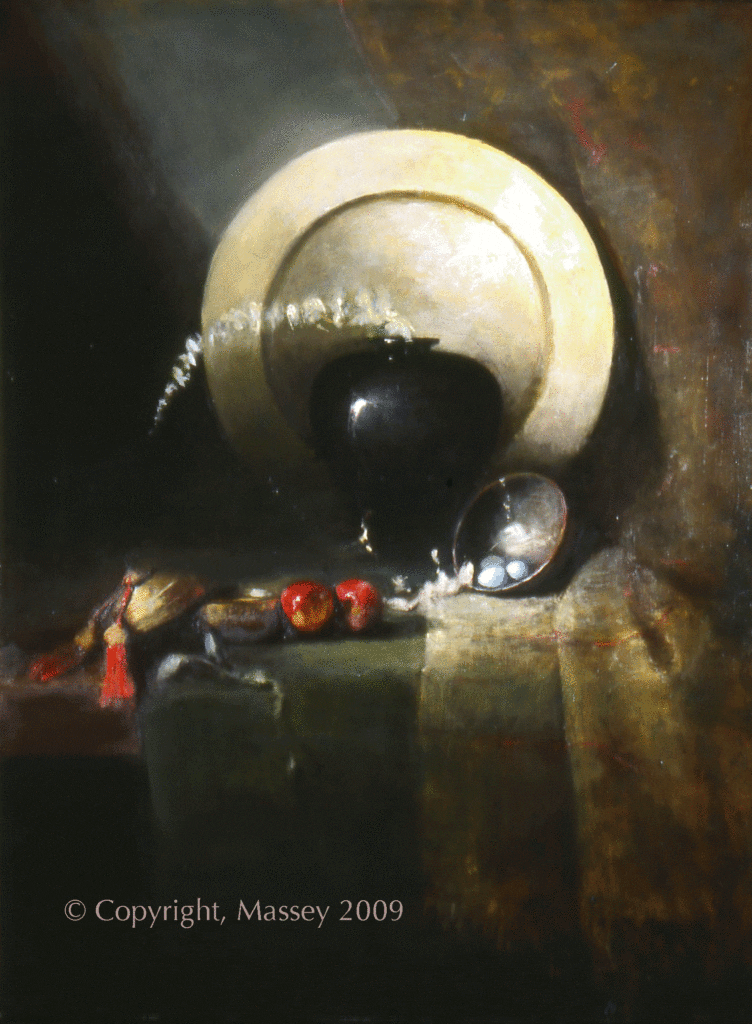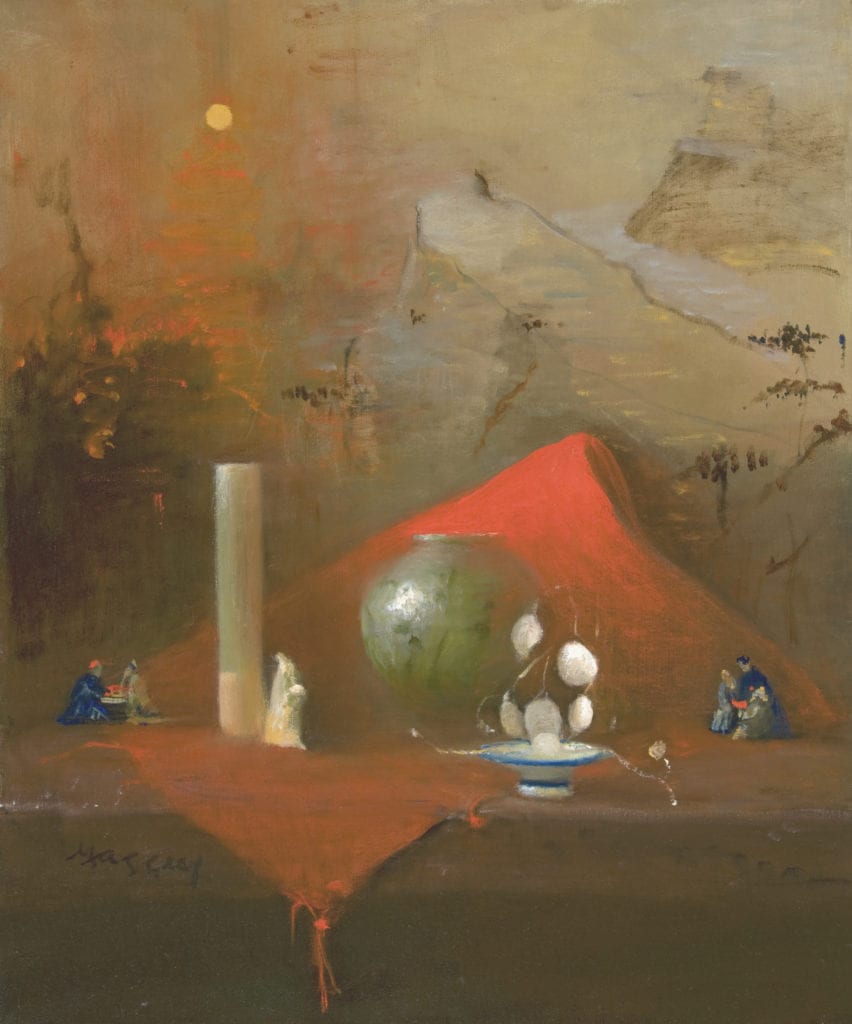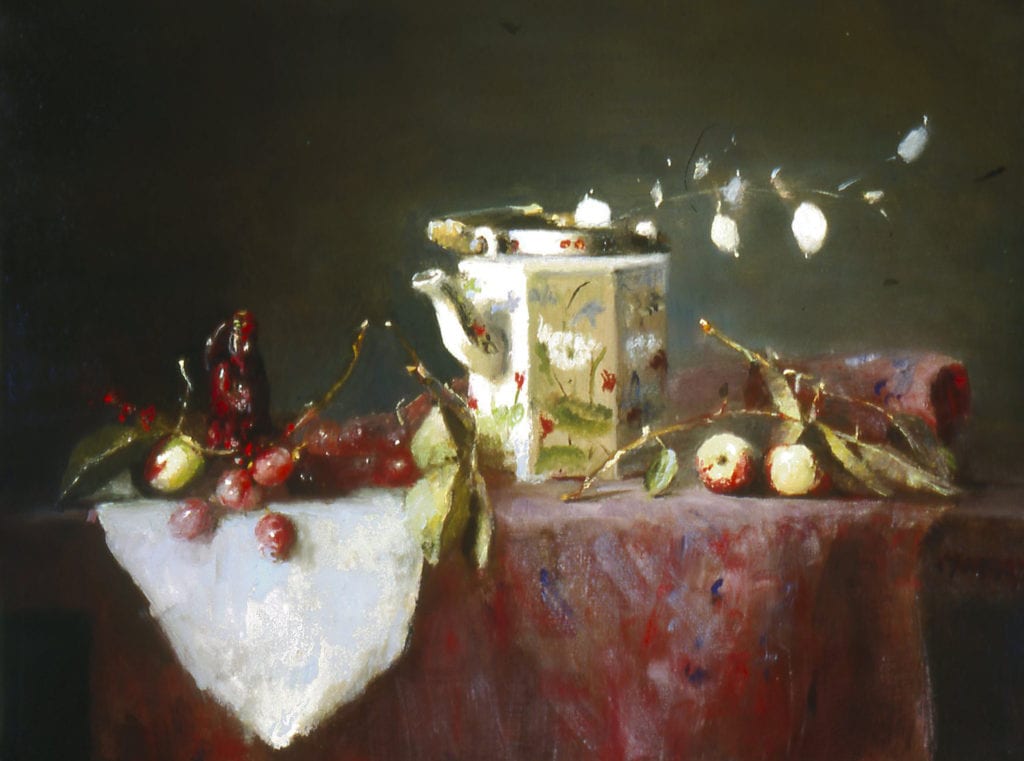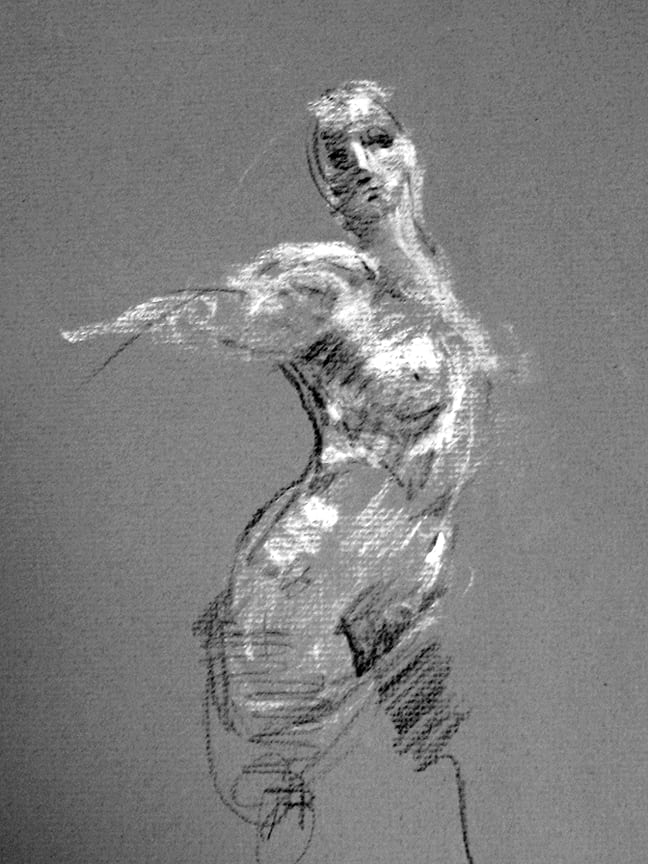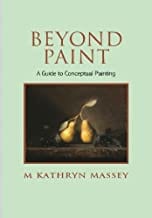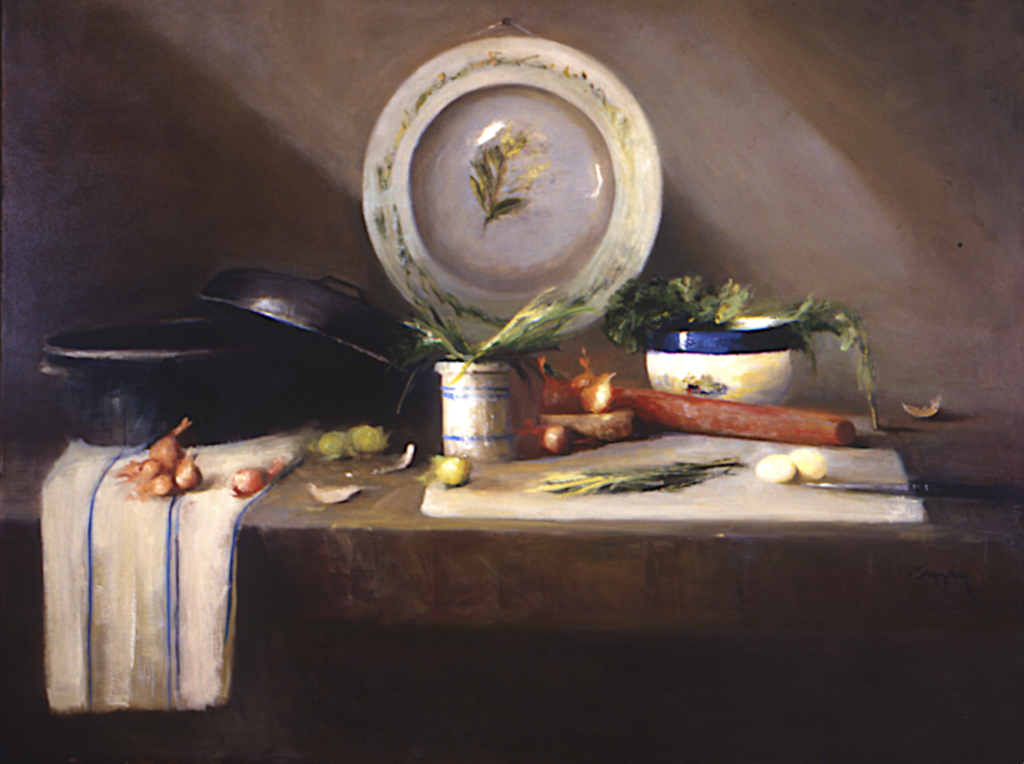
36″ x 48″ – Oil
I began to paint in 1994 at the age of 41. There was no preparation or instruction prior to that time. People often ask, “You mean you just started painting?” Yes, I just began to paint.
As I think about my journey as a painter, I find I have internally shifted. What does this mean?
It means I try to shed all external noise and forces that get in the way of the painting process. I place myself in a painting “space.” In turn, I find myself conscious during painting. I catch myself when I drift away from the work at hand. I give my full attention, as energy permits, to watching and waiting on the painting. This is what I call Intention + Concept through active awareness, or being “in the presence of the painting”.
The best painting results come about when I work with the idea of having a completed concept in my mind’s eye, without being absorbed in the details of the subject, and without unconsciously laying down paint. In other words, I strive to paint my concept while being aware of all things in front of me. I now practice painting while more conscious of the process. I am mindful of my intention. Intention and concept are co-mingled — we as painters must let the viewer know what our painting is about.
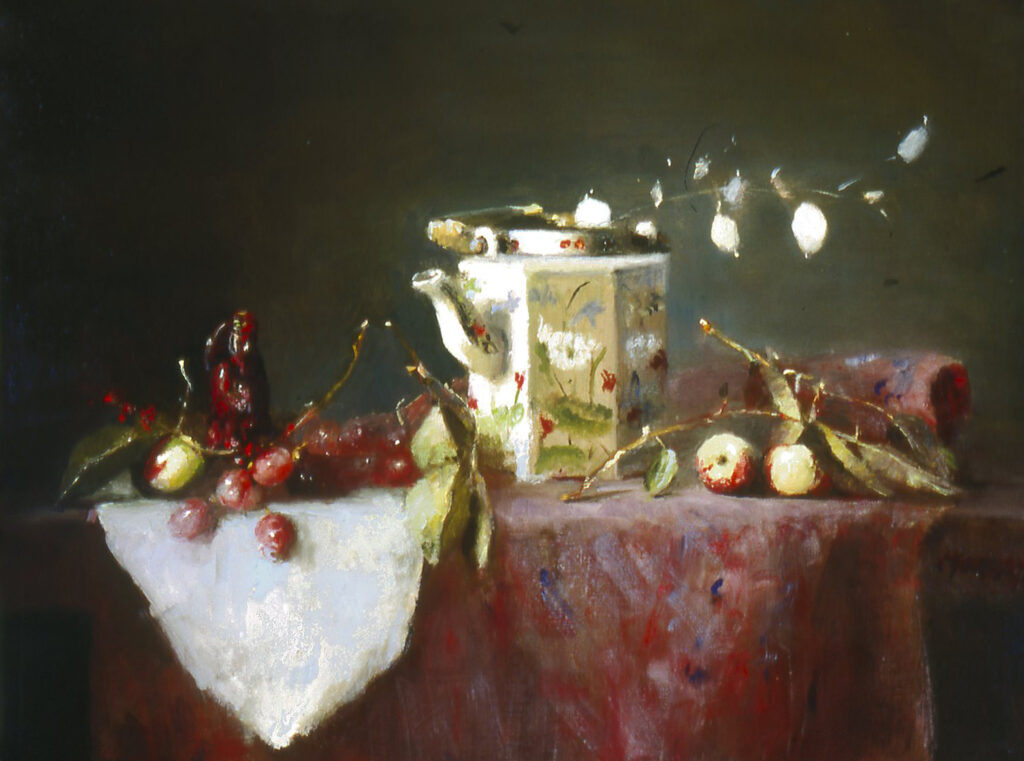
22″ x 28″ – Oil
It is a long journey to arrive at the space that allows you to be one with your picture — to let the canvas tell you what it needs, and to watch the canvas “become”. You must get out of the way while still attending to the work before you. The best thing one can do is practice while fully present to the process, and to catch yourself when internally drifting or thinking of something outside of painting. Even when you KNOW what is necessary, you may not always DO what is necessary for the good of the painting.
I find that as I age as a painter, distractions such as shows, sales, awards — all of it has fallen away. I am happy just to paint and struggle with my challenges each time I go to the easel.
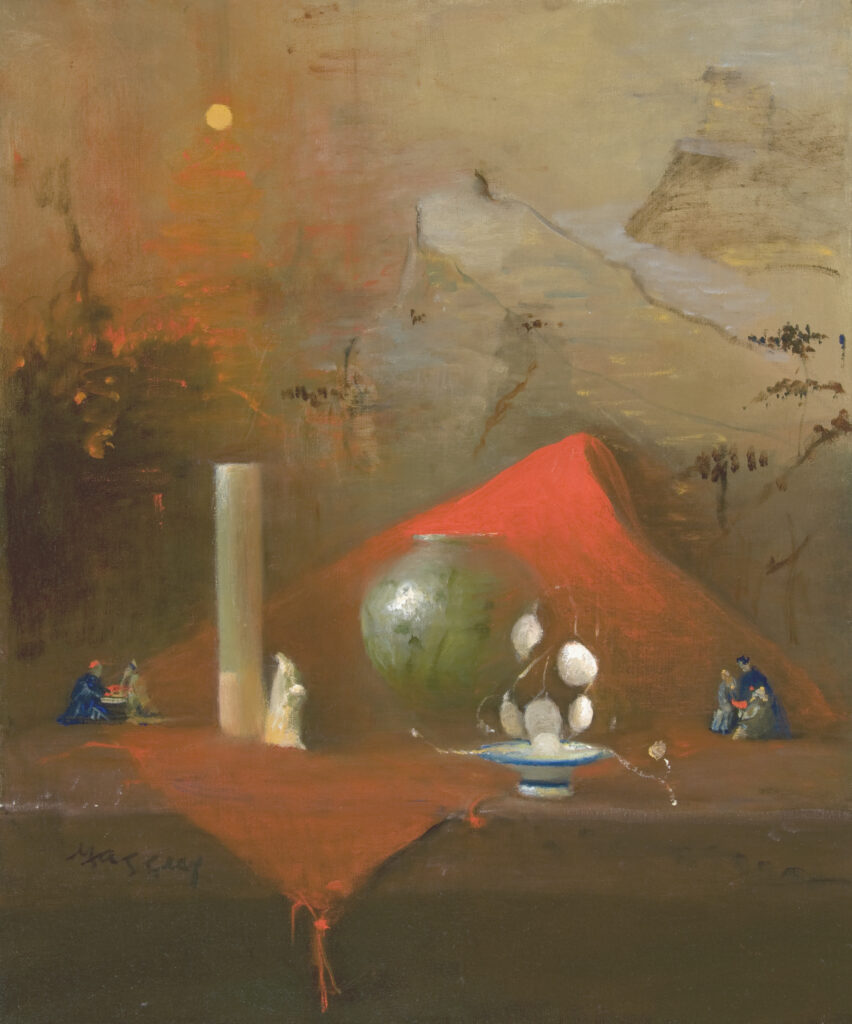
28″ x 22″ – Oil
Has painting become easier? Yes and no. Getting to this point has certainly been difficult. But, I feel more at peace having entered into this present place of painting. The journey could only have happened the way it happened. Being more aware of when I am not paying attention has made painting more enjoyable, and produces a better result.
Learning to paint isn’t linear. It ebbs and flows — it feels within one’s grasp only to move or shift. You think you are practicing while awake, and then you drift. You fall asleep to your process.
I now know when I am drifting off or leaving the presence of the painting in front of me. I catch myself noodling or copying instead of watching and waiting on the picture’s concept. I catch myself…that’s the important thing.
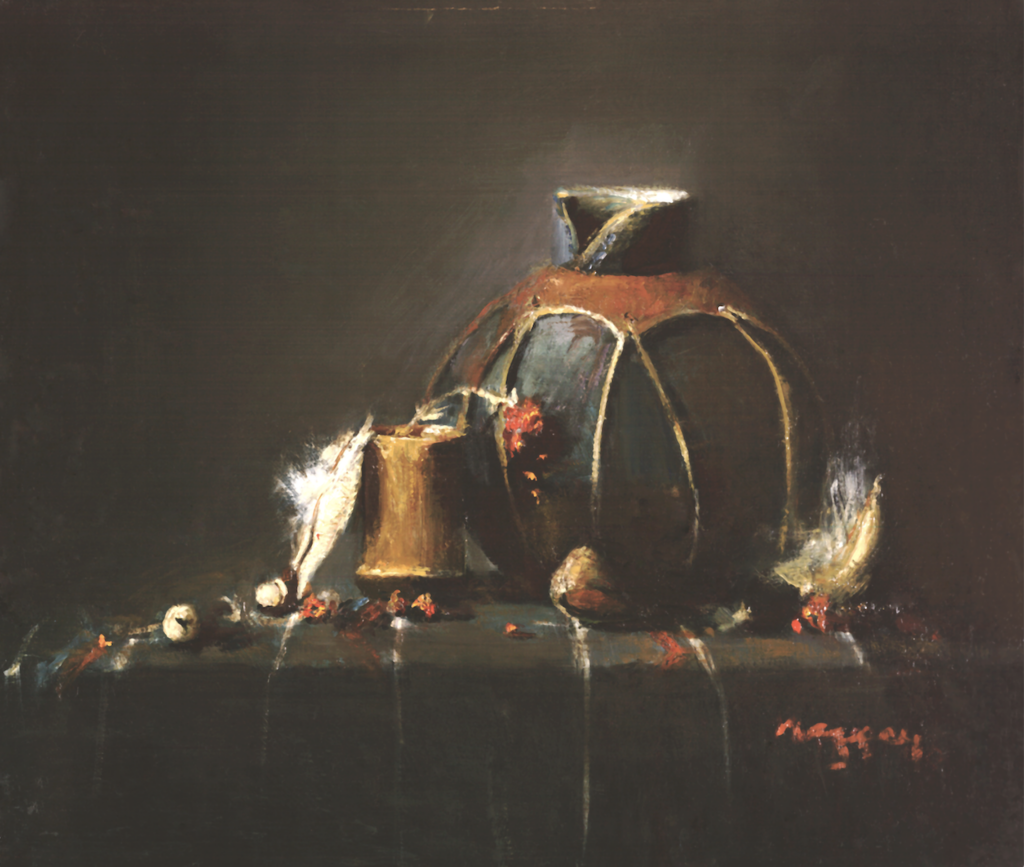
15″ x 17″ – Oil
